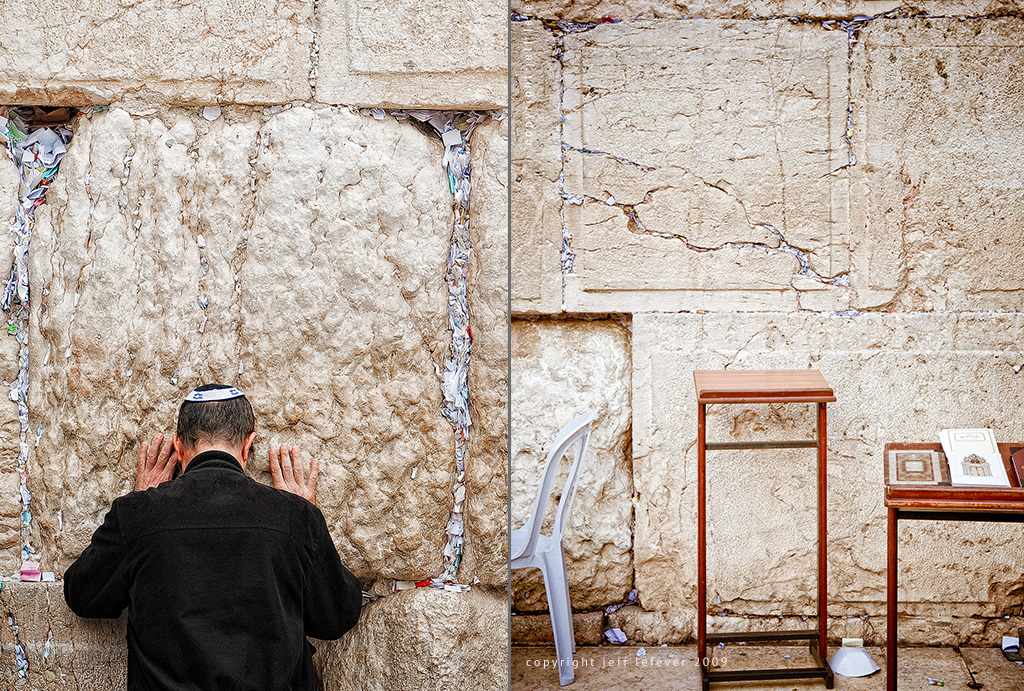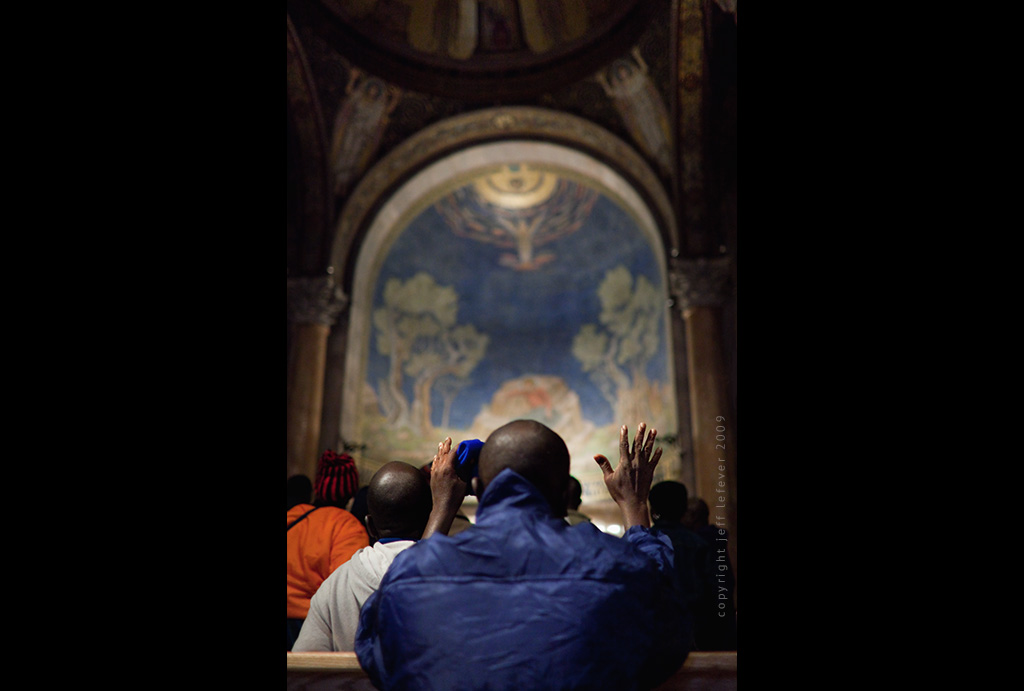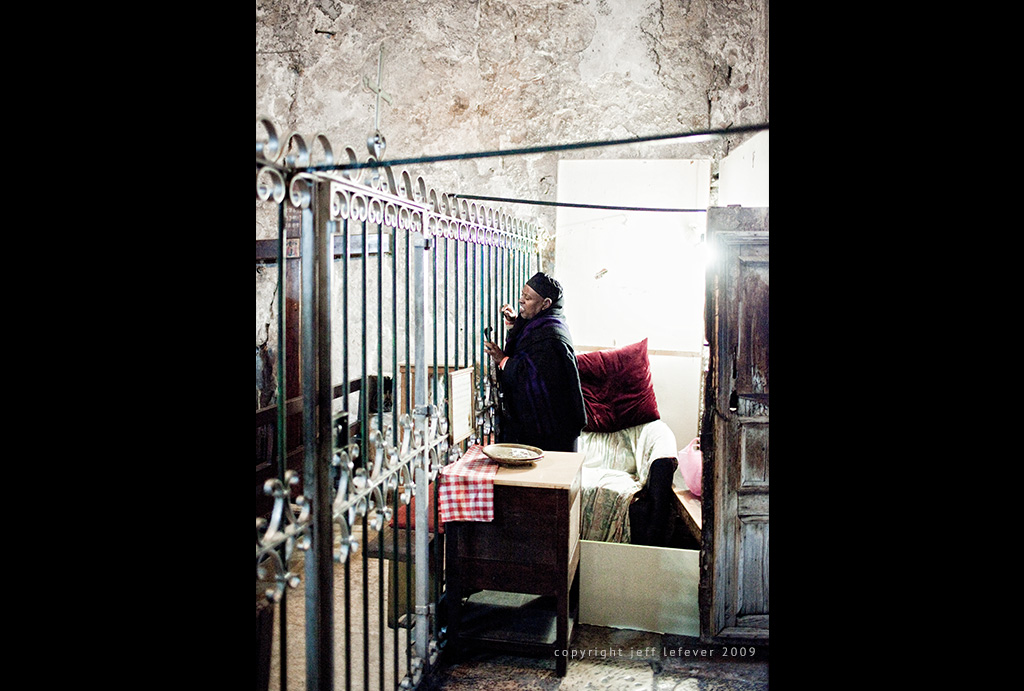Every crevice and crack within reach of a human hand in the Jerusalem Stones* of HaKotel are stuffed with prayers. Pencil, ink, marker, crayon…letters, and artworks on white and colored papers, all folded tightly and squeezed into any available space with the hope that here, more than anywhere, God will take note, and prayer will be answered.
Pilgrimage is made to HaKotel specifically for prayer.
The sages state that anyone who prays in the Temple in Jerusalem prays before the throne of glory, because the gate of heaven is here, and is open. Though the Temple is destroyed, and though Christians would argue that Jesus eliminated the Holy of Holies when He became the eternal High Priest, this wall remains. Believers say it has always been protected by God.
I have brought my prayers. I have brought the prayers of family, of friends, and sponsors of this trip.
I fold my prayers even smaller to wedge them individually into different areas, wherever I find even the smallest cleft. Prayer notes fill the cracks like mortar.
These prayers are removed and buried at intervals. I am between intervals.
These paper prayers are everywhere in the Wall. Prayers for the dead and the dying. Prayers for blessing. Prayers for help and guidance, hope and need. Prayers of love to Abba Father. Prayers of gratitude.
The Talmud teaches that all prayers ascend to heaven through Jerusalem. Writing a prayer on paper and placing it into HaKotel is like having a continual prayer linked to the prime source.
This Western Wall, the remnant of the Temple, is proof to the Jews of God’s promise to be with them and to never forsake His chosen people. Divine Presence rests on the Western Wall more than other places.
God’s presence is felt here.
The intent of the religious Jew is felt here. Facing the Wall, men read prayers from books; they read and sing prayers in minions.
Some people are here for hours. Joy, thanksgiving, tears, and anguish permeate the air amid the pleas for a restored Israel and the rebuilding of the Temple.
Here the art is in the performance of worship: written word, recital, song, and the costumes of the religious all bring deep meaning to a space where God is met. It is history, it is legacy, it is intentional, and it is now.
God and humanity imbue HaKotel with deep meaning– a sacred site.
~JWL
* Jerusalem Stone is a general term, to be exact: meleke limestone (meleke- Arabic “royal” or “kingly”).



